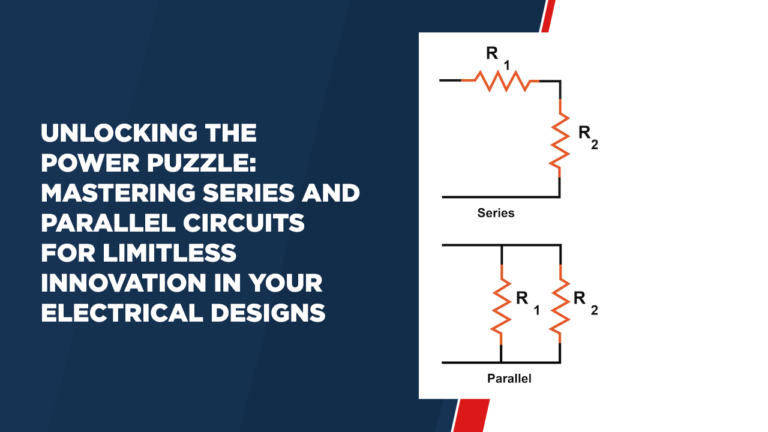Unlocking the Power Puzzle: Mastering Series and Parallel Circuits for Limitless Innovation in Your Electrical Designs!
Introduction
In the realm of electrical engineering, two fundamental circuit configurations hold the key to a world of innovation: series and parallel circuits. These circuit arrangements, when understood and harnessed effectively, open up a plethora of possibilities for engineers and designers alike. In this article, we’ll delve into the intricacies of series and parallel circuits, exploring their diagrams, formulas, real-world examples, as well as their advantages and disadvantages.
Understanding Series and Parallel Circuits
Series and parallel circuits are the building blocks of most electrical systems. A series circuit is formed when components are connected end-to-end, creating a single path for current flow. In contrast, parallel circuits feature multiple paths for current to travel, enhancing reliability and scalability.
Series and Parallel Circuit Diagrams
Visualizing these circuit arrangements is crucial. In a series circuit, components are aligned one after another, like cars in a train. The current remains constant across each component. In parallel circuits, components are side by side with multiple paths for current, resembling a branching tree.
Series and Parallel Circuit Examples
Imagine a string of decorative lights – a classic series circuit example. If one bulb burns out, the entire string goes dark. Conversely, household wiring exemplifies parallel circuits; a single faulty appliance doesn’t disrupt power flow to others. Combining both configurations in a complex design ensures efficiency and fault tolerance.
Series and Parallel Circuit Formula
Calculating total resistance (R_total) in series circuits is straightforward; you sum up individual resistances (R1 + R2 + … + Rn). In parallel circuits, it’s a bit more intricate: 1/R_total = 1/R1 + 1/R2 + … + 1/Rn. These formulas are pivotal in optimizing designs for desired outcomes.
Advantages and Disadvantages of Series and Parallel Circuits
Series circuits shine in simplicity and cost-effectiveness. However, they’re prone to complete failure if one element malfunctions. Parallel circuits offer redundancy – a single fault doesn’t cripple the system. However, they can be costlier due to increased components and complexity.
Unleashing Innovation Through Mastery
Mastering the dynamics of series and parallel circuits enables engineers to innovate boundlessly. Consider renewable energy systems: combining solar panels (parallel) with storage batteries (series) optimizes energy collection and distribution. In electronics, crafting intricate devices necessitates harnessing these circuit configurations to balance efficiency and reliability.
Conclusion
In conclusion, unlocking the power of series and parallel circuits is an indispensable skill for any electrical designer. By grasping their diagrams, formulas, and real-world applications, engineers empower themselves to navigate the intricacies of electrical systems. Embracing the advantages of each configuration while mitigating their disadvantages lays the foundation for groundbreaking innovation. So, as you embark on your next electrical design journey, remember – it’s all about mastering the power puzzle of series and parallel circuits!



